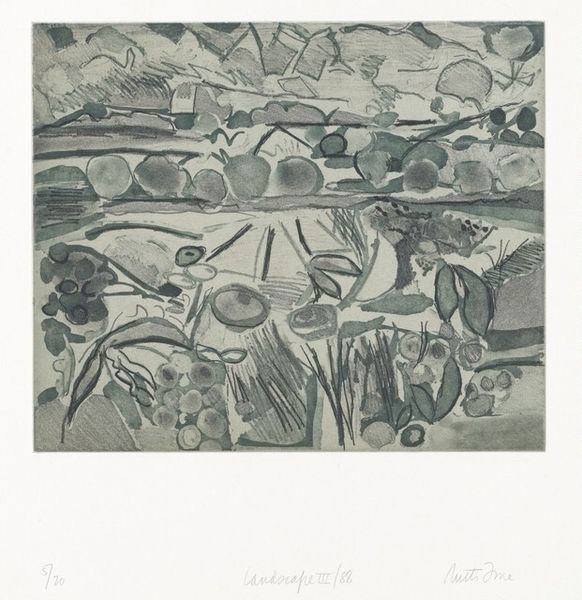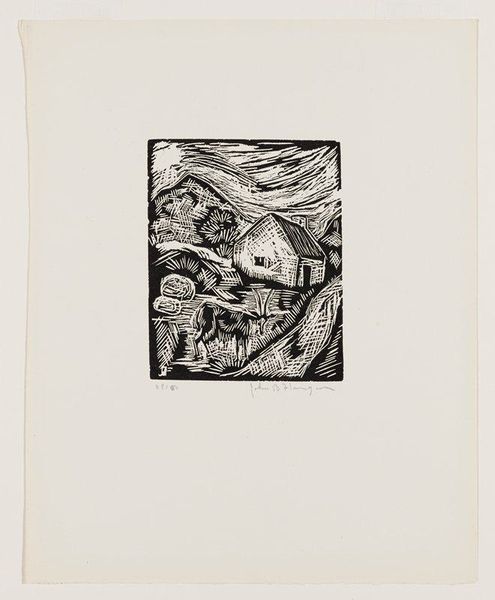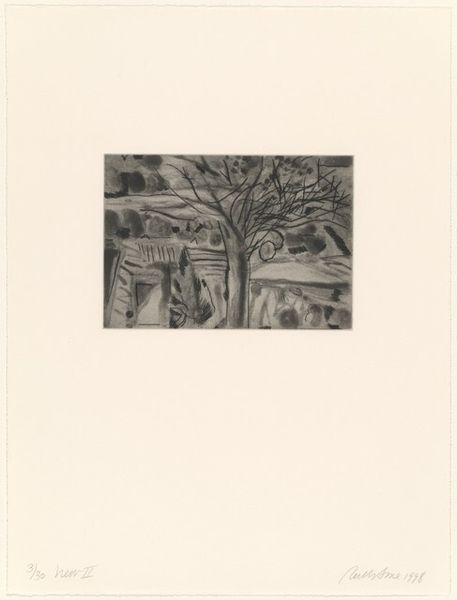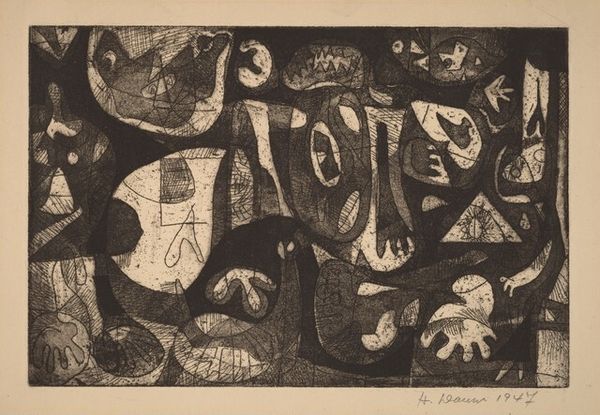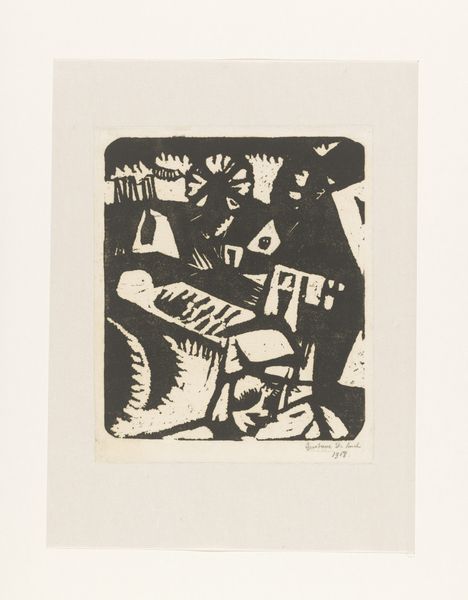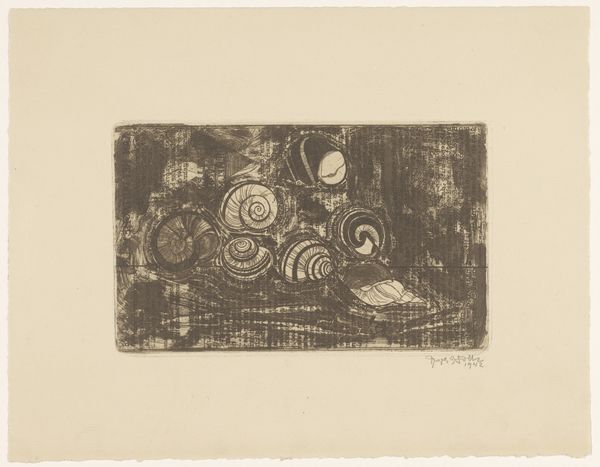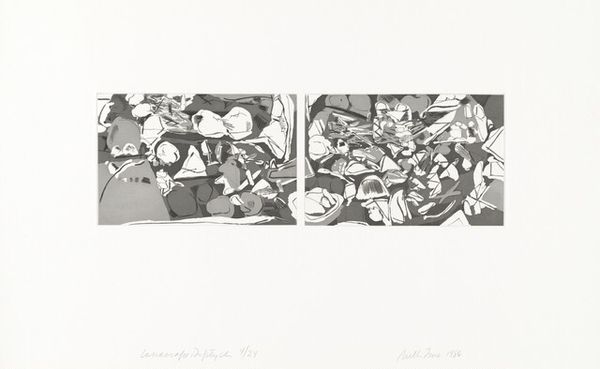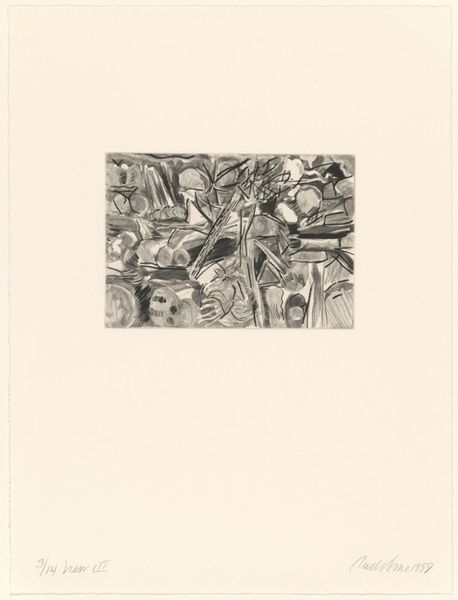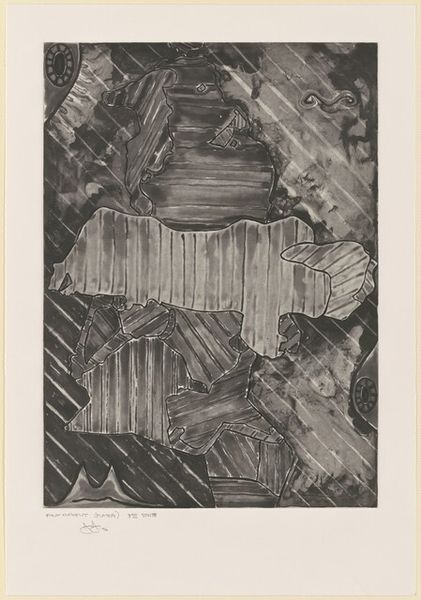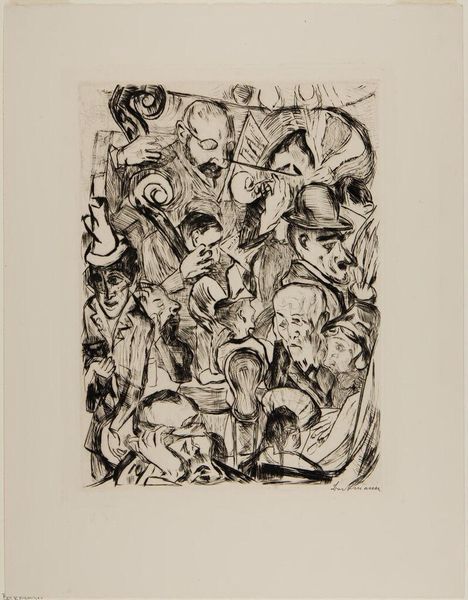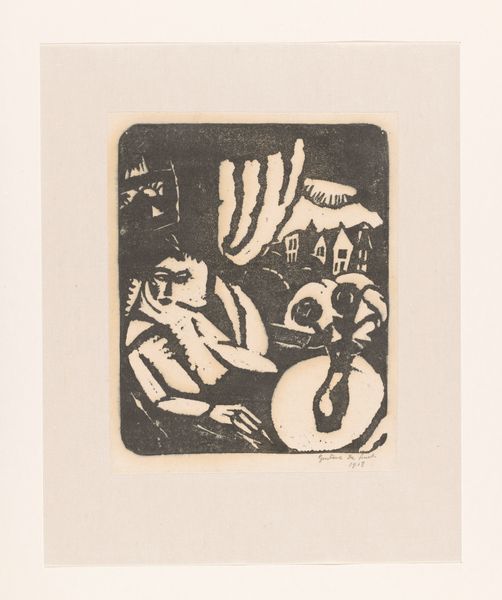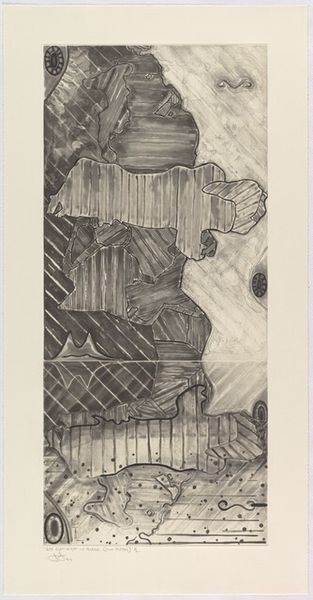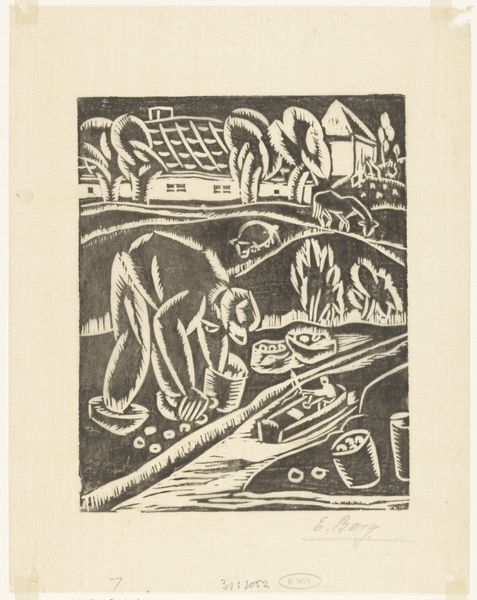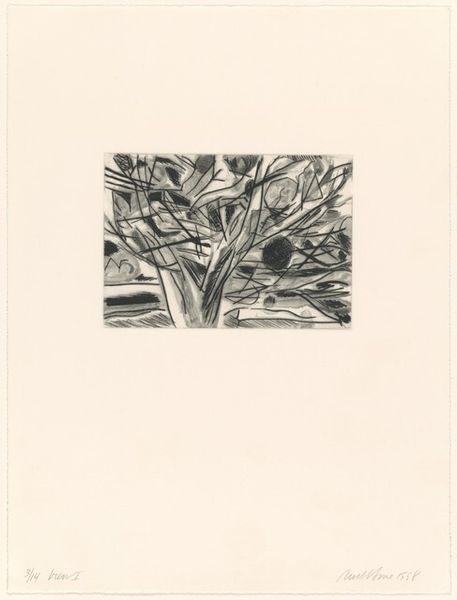
#
organic
# print
#
landscape
#
linocut print
#
organic pattern
#
abstraction
Dimensions: image: 25.1 × 30.2 cm (9 7/8 × 11 7/8 in.) sheet: 44.5 × 48 cm (17 1/2 × 18 7/8 in.)
Copyright: National Gallery of Art: CC0 1.0
Editor: This is Ruth Fine's "Landscape I" from 1988, a print. It's a chaotic, yet balanced composition of grey tones, which I find really compelling. What strikes you first about this piece? Curator: Immediately, I'm drawn to the interplay between the representational title and the apparent abstraction. Notice how Fine employs linocut to create textures, moving from the sharp definition of forms to more nebulous hatching that almost dissolves structure. Is this, perhaps, a deconstruction of "landscape" itself, taking its key components – organic patterns, for instance – and abstracting the whole? Editor: I hadn't considered that—breaking down the concept of landscape. I was just seeing shapes. So, what does that make the different shapes, like the circles, triangles, and clustered forms? Curator: Indeed. These forms appear, on the surface, almost biomorphic, suggesting organic elements within the natural world. They’re not strictly naturalistic, mind you. But there’s an allusion, or perhaps a residue, of naturalism inherent in their composition. Semiotically, consider the 'meaning-making' at play: does the triangular form denote mountains, while rounded shapes signify vegetation? Or is the entire semiotic code deliberately fragmented? Editor: That makes me think of it more as an environment or ecosystem and less like a picture. The more I look at the tonal range from the blacks to whites, I almost feel like there’s some sort of natural disaster here. Curator: That is interesting! A catastrophic event or even some sort of environmental transition could be valid interpretations, suggested not only by tonal conflict but also, the fracturing and displacement of forms. Consider then the artist’s structural decisions and how we might attribute layers of meaning beyond simple aesthetics. Editor: This was eye-opening. I was focusing too much on subject matter, but you've shown how the materiality and construction are key. Curator: Precisely. Hopefully, you will begin to notice these nuances moving forward in your formal engagements.
Comments
No comments
Be the first to comment and join the conversation on the ultimate creative platform.
